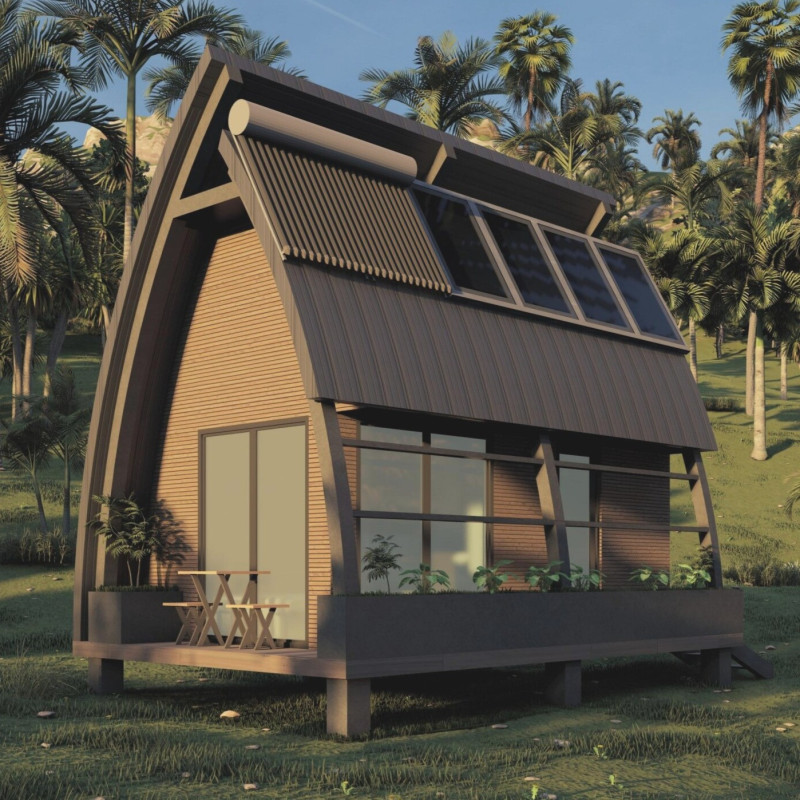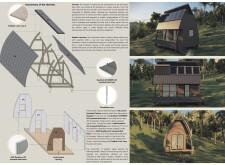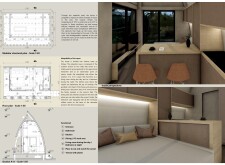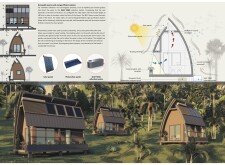5 key facts about this project
# Analytical Report on the Tiny Thai House Architectural Project
## Overview
The Tiny Thai House, situated in the Chang Mai region of Thailand, is designed to address economic housing challenges faced by potential homeowners while providing a sustainable living environment. The project incorporates modular construction techniques and eco-friendly materials, with a focus on creating adaptable spaces that support a healthy lifestyle within a micro-neighborhood context.
## Materials and Environmental Strategy
This project emphasizes sustainability through the careful selection of materials and systems that enhance energy efficiency. Key components include insulated roof and wall panels that maintain thermal comfort, local bamboo flooring for reduced environmental impact, and a modern foundation system designed to minimize ground disruption. The integration of a biowaste treatment plant and photovoltaic panels ensures effective resource management and harnesses solar energy.
Furthermore, rainwater collection systems and passive design strategies, such as strategically placed skylights for natural ventilation, contribute to the home's ecological footprint. These elements reflect a commitment to sustainability and environmental responsiveness in design, aligned with local climatic conditions.
## Spatial Design and Flexibility
The architectural layout promotes modularity and flexibility, facilitating efficient assembly and transport. The arrangement of functional zones—including an entrance, bathroom, kitchen, and multipurpose living space—optimizes spatial use. The living area transitions from dining and work functions by day to a bedroom at night, enhancing occupant comfort.
Interior design is characterized by natural materials and warm color palettes, fostering a welcoming atmosphere. Expansive windows connect indoor environments with the natural surroundings, while adaptable outdoor terraces accommodate various uses, from leisure to gardening. This emphasis on adaptability and multi-functionality strengthens the overall user experience within the Tiny Thai House.





















































